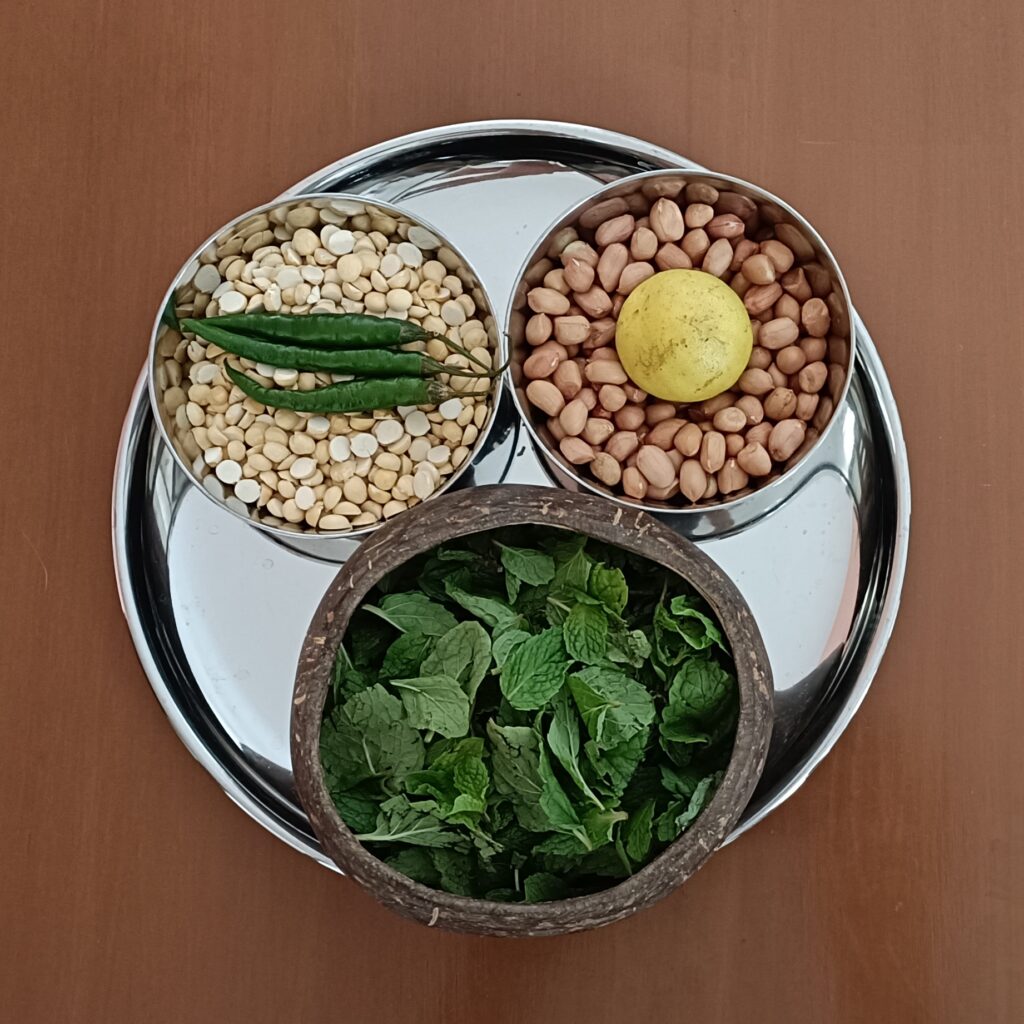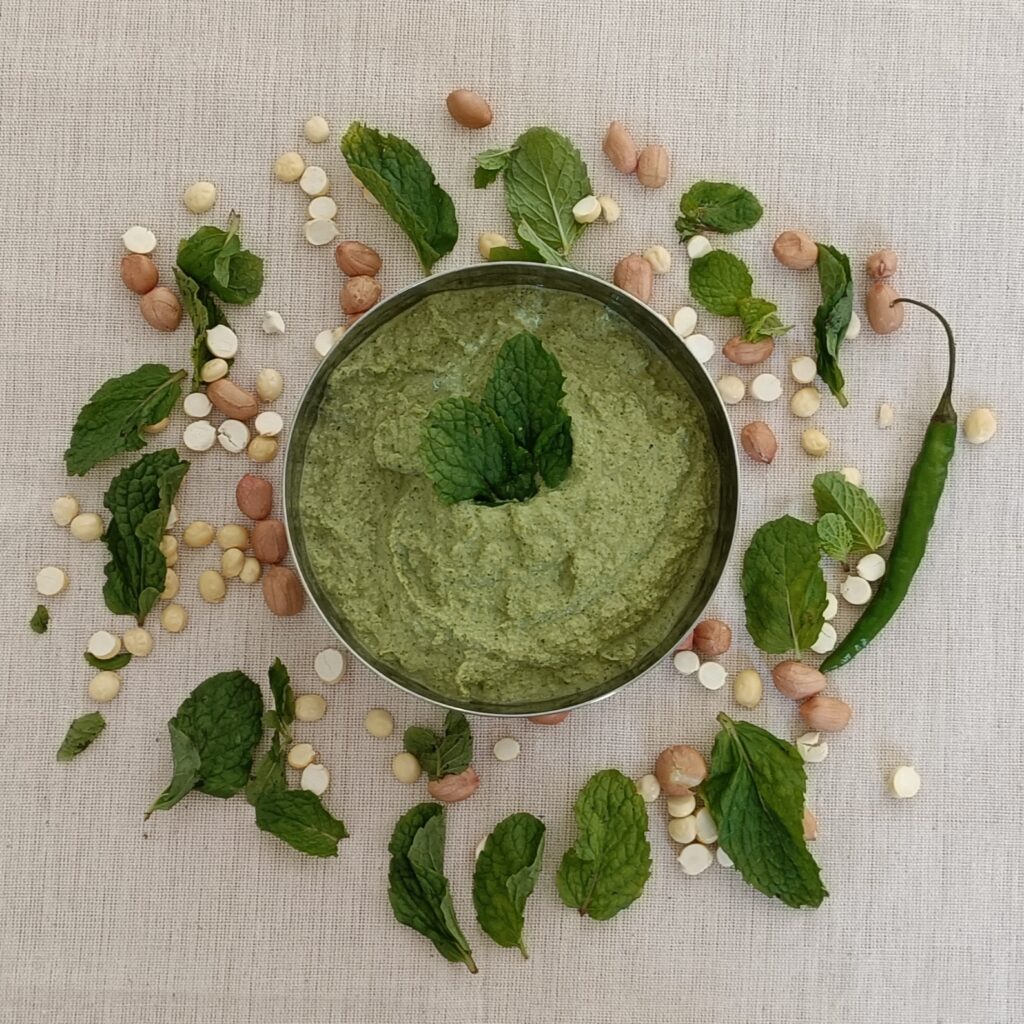Recipe credit: Darshana Muzumdar
Serves 4 as part of a traditional Indian meal.
Ingredients
- 1-1½ cups firmly packed fresh mint leaves
- ½ cup (or less) peanuts, soaked or roasted
- ½ cup (or less) chana dal (split chickpeas)
- 1 – 3 green chillies (use less if they are spicy hot)
- 3 tsp lime juice (juice of 1 lime)
- 1 tsp oil (optional)
- Salt to taste
Method
- Soak the peanuts overnight and drain and rinse them the next morning. Alternatively, roast the peanuts till they lose their raw taste.
- Dry roast the chana dal in an iron tempering ladle till light brown and then soak it for an hour or two. Alternatively, use the roasted chana dal, called putana or dalia readily available in the market, without soaking it.
- Grind all the ingredients in a blender jar with as little water as possible. The oil maintains the green colour of the chutney.
For the Whole-Food Plant-Based (WFPB) version:
- Do not add the oil.
- Roasting peanuts makes them acidic, so it’s always better to use soaked peanuts.


Share this:
- Click to share on Facebook (Opens in new window)
- Click to share on WhatsApp (Opens in new window)
- Click to share on Twitter (Opens in new window)
- Click to share on Pinterest (Opens in new window)
- Click to share on LinkedIn (Opens in new window)
- Click to share on Skype (Opens in new window)
- Click to share on Reddit (Opens in new window)
- Click to share on Tumblr (Opens in new window)
- Click to share on Pocket (Opens in new window)
- Click to share on Telegram (Opens in new window)
- Click to print (Opens in new window)

